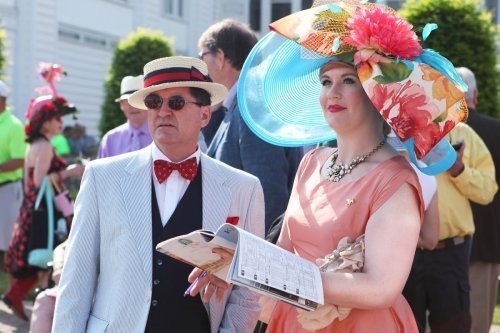2 Min Read
Come for the Horses, Stay for the Hats
All eyes were on Rich Strike as he crossed the finish line at Saturday’s Kentucky Derby.
But in the hours before and after the two most exciting minutes in sports, people were talking about the hats.
The most elaborate Kentucky Derby hats take nearly a year to make and cost almost $1,000.
What does outlandish headwear have to do with horseracing, anyway?
The answer has to do with the power of influencers to reshape perceptions – and lucky superstitions.
In 1872, Col. Meriwether Lewis Clark Jr. was traveling in Europe and witnessed the Grand Prix de Paris horse race and similar Derby races in England. He saw an opportunity to bring the same kind of events to America.
But horse races in the U.S. weren’t exactly known for their high society spectators. The tracks were places for men to go on their own to gamble — and drink.
So Clark recruited his wife and her most posh friends. The women dressed up in their fanciest outfits (and fanciest hats) and literally went door to door inviting others to a “picnic at the racetrack.”
It worked. More than 10,000 spectators showed up for the first Kentucky Derby in 1875, and the media made note of the upper crust attendees and their fashionable outfits and hats.

Move Over, Mint Julips
As the event and fashion norms evolved, the hats evolved with them. More relaxed fashion standards in the 1960s empowered women to wear more outlandish hats. That coincided with the derby being televised, which further incentivized them to customize their caps to be noticed by viewers at home.
As hats fell out of favor in everyday fashion, the association with the Derby grew even stronger.
For nearly 150 years, the hats have served as a hook to attract a different audience to Churchill Downs.
While many attendees today claim “the bigger the hat, the bigger the luck,” the headwear has come to embody an event that’s more about being seen than betting on the ponies.